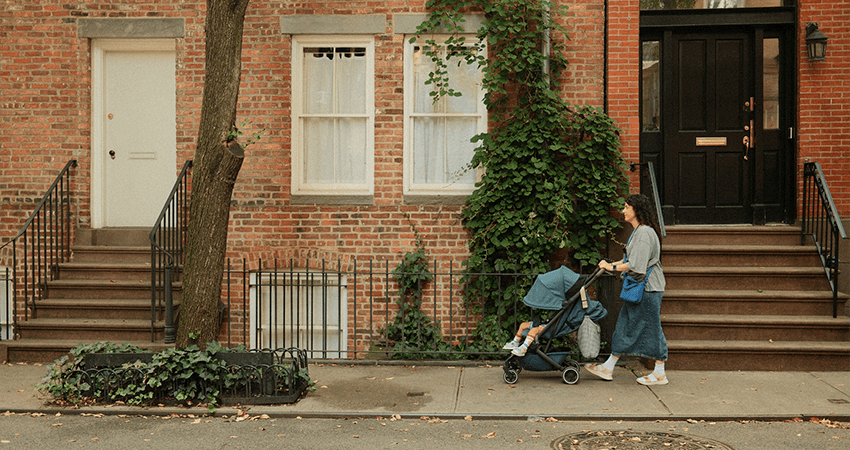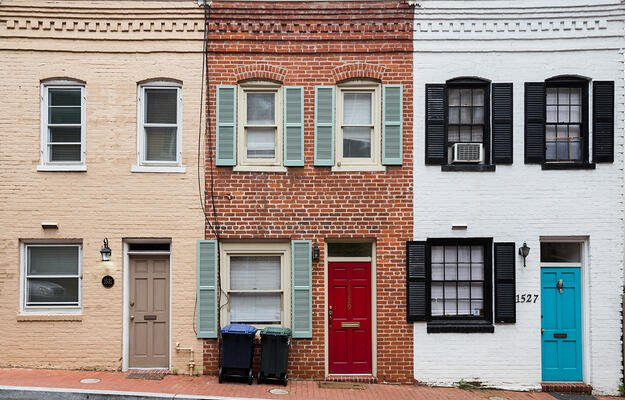
FilippoBacci, Getty Images
What’s the Key to Preserving Unsubsidized Affordable Housing?
Housing is increasingly unaffordable across the US. Rents are creeping higher, homebuyers are increasingly being priced out, and renter cost burdens have reached record highs. People in communities who have already been left behind are at risk of getting further boxed out.
This makes preserving unsubsidized, lower-cost rental buildings for those with low and middle incomes more important than ever. For those working to protect this rental stock, variation in housing type, quality, ownership, and local market conditions can make the development and implementation of preservation strategies a challenge. Comprehensive data on properties and neighborhood context are key for both assessing the scope of the issue and crafting proactive, tailored responses to existing and future crises.
Organizations across the country are offering community data services to connect local partners with data and guidance. By transforming local administrative data (like property records) into actionable information, they provide housing advocates and practitioners with information to shape community organizing and policy change.
Two examples in Chicago and Denver—both affiliated with members of the National Neighborhood Indicators Partnership (NNIP)—provide a replicable model for building effective partnerships between providers of community data services and affordable housing advocates and practitioners. They show how in the hands of trusted community partners, data can be a powerful tool for equity and resilience.
Combining data with resident stories to support antideconversion ordinances in Chicago
Two-to-four-unit residential buildings make up a quarter of Chicago’s housing units and are a key source of unsubsidized affordable housing, particularly in Black and Latino communities. Demand from residents with higher incomes led to an increase in the deconversion of these small buildings into single-family homes, which reduced the supply of housing units and often raised the cost of housing in the market.
The Institute for Housing Studies (IHS) at DePaul University quantified the loss of these buildings and found that from 2013 to 2019, 11,775 rental and owner-occupied housing units were lost. Of all the multiunit properties, 47.5 percent were converted to single-family homes. The remaining properties became vacant land, were refurbished for nonresidential use, or became other residential property types. The IHS found this loss of multifamily two-to-four-unit buildings increased affordability pressures and displacement risk, especially in neighborhoods facing active gentrification and historical disinvestment. The IHS also created risk maps to show displacement pressure and deconversion in transit areas and produced data on the price and affordability of the two-to-four-unit housing stock.
One of the IHS’s key partners is Elevated Chicago, a cross-sector coalition of organizations focused on equitable, transit-oriented development. Preserving housing stability and affordability in gentrifying neighborhoods is a key component of this work. Leveraging IHS data, Elevate Chicago drove a knowledge-sharing campaign using strategies like recording narrated neighborhood walks from residents to amplify community voices and contextualize the data. Their partnership informed a two-year engagement with more than 80 community and civic stakeholders to build a truly equitable, transit-oriented development policy in Chicago—the Connected Communities Ordinance.
The IHS’s substantial influence in local policy is because of long-term partnerships with community organizations and policymakers built from rigorous housing analysis and ongoing engagement. The IHS’s work was directly cited in two 2021 anti-deconversion ordinances that prohibit the construction of single-family homes and the conversion of multifamily-unit buildings to single-family residences in two areas dealing with rapidly increasing housing costs and displacement pressures: the 606 trail, including the Humboldt Park and Logan Square neighborhoods, and Pilsen, a predominantly Latino neighborhood in the Lower West Side of Chicago. Beyond data, the insights gleaned from the IHS’s sustained technical assistance to and collaboration with community groups helped inform the types of buildings covered by the legislation and the criteria for the restricted areas.
When advocating for the Connected Communities Ordinance, this strong partnership between Elevated Chicago and the IHS produced not only data but also powerful narratives from community engagement that grounded those numbers and made the case for the ordinance. The ordinance successfully passed in 2022 and is the foundation of Chicago’s current approach to equitable, transit-oriented development.
Creating tools and trainings to preserve small to midsize multifamily properties in Denver
In Colorado, small to midsize multifamily buildings (PDF) compose nearly half of the state’s rental housing stock, and two-thirds of these units are occupied by households earning less than $75,000 per year. The Colorado Futures Center (CFC) collaborated with partners to identify affordable unsubsidized units using parcel data and shared these data with the Colorado Housing Finance Agency and the Colorado Housing Preservation Network, including Enterprise Community Partners, who developed strategies with nonprofit housing agencies to acquire and preserve these properties in the Denver metropolitan area.
In 2020, the CFC and partner nonprofit and community organizations including Mile High Connects released the Community Alert Database. The database centers on neighborhoods in the Denver metro area at high risk of displacement and provides community organizers with vital information about who owns and controls rental properties in their neighborhoods, which is often obscured behind limited liability corporations. With direct input from community organizers about what data they need, the CFC compiled a complex database including variables on property attributes (e.g., property type, zoning), ownership structure to better understand owner portfolios (e.g., owner name, portfolio unit count), and economic factors (e.g., valuation, cost-of-replacement ratio).
The CFC’s work also identified properties well suited for acquisition and preservation by mission-oriented agencies. In partnership with Enterprise, the CFC developed a typology for property and owner types that research showed would be more amenable to selling for preservation. By overlaying gentrifying neighborhoods with this map, the CFC and Enterprise worked with partners to design a comprehensive preservation and acquisition strategy in priority neighborhoods and pinpointed more than 4,500 potential units.
Enterprise used these data to design a public preservation training series and fund a cohort of mission-driven nonprofits interested in applying best practices for acquiring and preserving unsubsidized affordable housing. They also provided direct technical assistance and operating grants to find, analyze, underwrite, and finance acquisitions. Further, leveraging the CFC’s data and in partnership with community-based organizations, they worked with city and state housing agencies to inform strategic planning efforts and ensure preservation was an explicit component of those plans, along with dedicated resources for nonprofit housing agencies. To date, this work has resulted in property acquisitions through the Colorado Housing and Finance Authority preservation pilot fund and the state Division of Housing’s $25,000,000 investment in the Impact Development Fund’s affordable housing lending program.
Other cities can build similar partnerships to preserve housing affordability
As threats to maintaining unsubsidized affordable housing stock intensify, the organizations that provide community data services, such as those highlighted in Chicago and Denver, will only become more vital. Members of NNIP exist to support using data to shape strategies and investments so all neighborhoods are places where people can thrive, not only in Chicago and Denver but also in more than 30 cities across the United States. Connecting with NNIP can be a useful first step in finding the right data partner in your city. In communities without an NNIP partner organization, the network also has guidance for how to locate trusted local data partners (PDF). Investing in these relationships now can help cities stay ahead of displacement and ensure affordability remains a cornerstone of thriving, inclusive neighborhoods.


